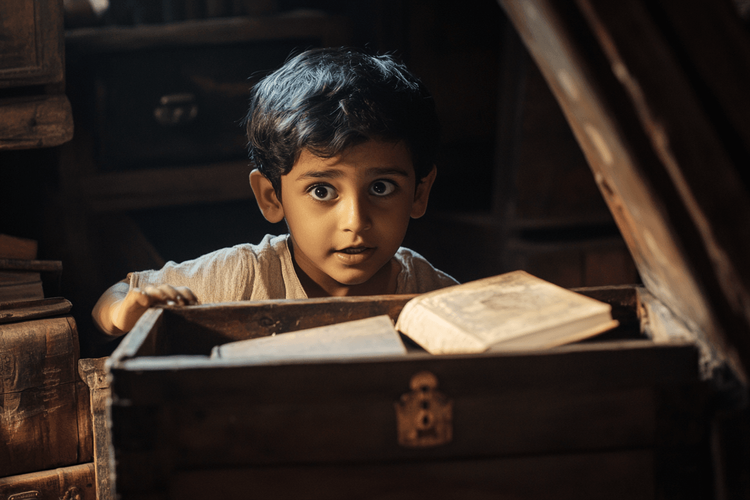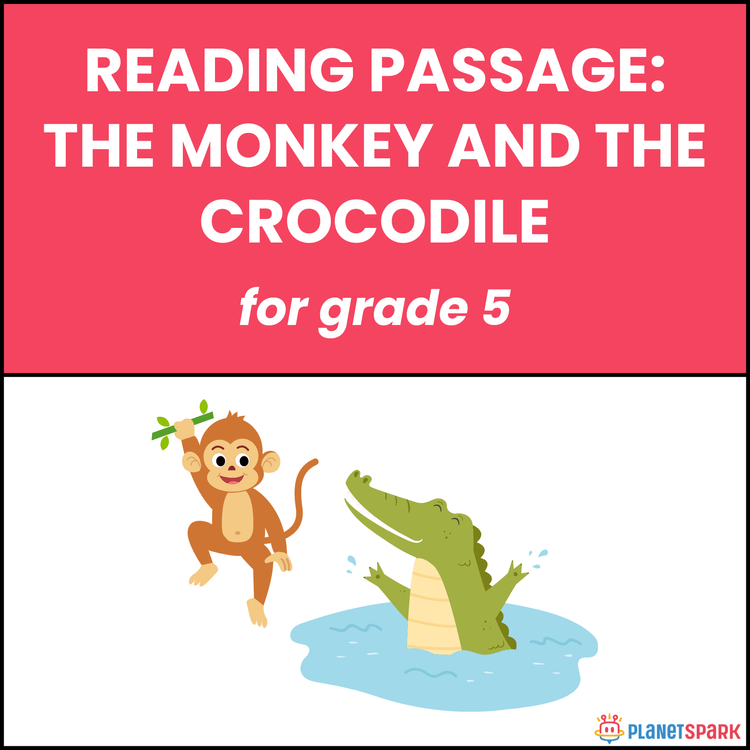10 Best Adventure Stories for Kids of All Ages | Must-Read Picks

Table of Contents
- The Power of Adventure Stories for Kids
- How Adventure Stories Develop Creativity
- Structure of a Compelling Adventure Story
- Character Building in Adventure Stories
- Bringing the Setting to Life
- Incorporating Conflict and Stakes
- Dialogue and Voice
- Using Imagery and Figurative Language
- Adventure Story Example (300 words)
- Editing and Polishing
- Benefits of Writing Adventure Stories
- 10 Best Adventure Stories for Kids of All Ages
- PlanetSpark’s Creative Writing Course: Where Adventures Begi
- Showcase Your Child’s Story
- Conclusion:
- FAQs:
Every child loves a thrilling tale - adventure stories for kids whisk them off on extraordinary journeys where heroes brave danger, solve mysteries, and discover hidden treasures. These narratives ignite imagination, build resilience, and encourage critical thinking. They lay the foundation for empathy, creativity, and courage. As parents and educators, we can nurture this spark by guiding children to not only read but also create their own adventure stories - a skill beautifully fostered by PlanetSpark’s Creative Writing Course.
The Power of Adventure Stories for Kids
Kid-friendly adventure stories captivate young minds by combining exciting plots with relatable emotional journeys. They often include:
- Brave young protagonists taking on fears
- Mysterious settings like enchanted forests, space stations, or hidden islands
- Obstacles and challenges, from puzzles to natural disasters
- Supportive sidekicks or mentors
- A transformational journey with lessons learned
These elements help children internalize values like teamwork, problem-solving, and courage under adversity - skills essential for real-world confidence.
How Adventure Stories Develop Creativity
Writing adventure stories stimulates imagination by encouraging kids to invent:
- Unique worlds -oceans, mountains, or alien planets
- Puzzles that require clever thinking
- Unusual characters- dragon friends, time-travel sidekicks
- Exciting plot twists - hidden caves, magical artifacts, daring escapes
When children engage in storytelling, they stretch language skills, narrative structure understanding, and creative thinking. Shared narratives strengthen family bonds and build empathy.
Structure of a Compelling Adventure Story
Every great adventure follows a narrative structure kids can easily grasp:
- Introduction – Introduce a relatable hero, setting, and hint of adventure
- Inciting Incident – The event that sets the journey in motion
- Rising Action – A series of obstacles and mini-adventures
- Climax – The story’s peak where the greatest challenge is faced
- Falling Action – Aftermath of the climax and emotional resolution
- Conclusion – The hero returns, lessons learned, and growth shown
By focusing on this six-step structure, children learn storytelling flow and maintain narrative momentum.
Using prompts is a great way to kickstart adventure stories. Share these with your child:
- Lost in a rainforest inhabited by glowing animals
- A time-travel portal is hidden in a backyard treehouse
- A pirate crew that searches for a magical compass
- A secret underwater city lost for centuries
- A robot pal that goes missing on a distant planet
- A talking pet guiding their human on a treasure hunt
Encourage children to build on these ideas - creating characters, setting stakes, and crafting exciting twists. This process sharpens imagination, vocabulary, and narrative logic - all nurtured by guided instruction in PlanetSpark’s program.
Character Building in Adventure Stories
To create memorable adventure stories for kids, developing characters is essential:
- Heroes with flaws: A brave but scared explorer
- Sidekicks bringing comic relief: A clumsy robot or chatty parrot
- Villains with motivation: A misunderstood guardian of a hidden city
- Mentors: Wise grandparents or tech-genius friends
Teaching kids to write characters with depth helps children understand human behavior and write with empathy - skills that PlanetSpark’s creative writing mentors actively cultivate.
Bringing the Setting to Life
Rich settings transport readers into the heart of the adventure:
- Sensory details: The salty breeze, crunch of gravel, soft jungle hush
- Unusual flora and fauna: Bioluminescent vines, giant flowers
- Mystical or futuristic elements: Floating islands, crystal caves, hovering buses
- Atmospheric tone: Use weather and lighting to build mood
Encourage children to sketch maps of their worlds - this visual element supports descriptive writing and spatial imagination.
Incorporating Conflict and Stakes
Every compelling adventure needs tension:
- Internal conflict: Fear of the dark, homesickness
- External obstacles: Raging rivers, locked doors, mysterious riddles
- Social challenges: Gaining trust of allies, facing bullies
Teach kids to gradually introduce and resolve mini-conflicts, culminating in a grand challenge, reinforcing problem-solving and emotional resilience.
Dialogue and Voice
Dialogue brings characters to life and drives stories forward:
- Use simple, natural language
- Let characters have unique speech patterns
- Use dialogue to show relationships and emotions
Children learn to reveal personality through speech, an essential communication skill nurtured in PlanetSpark’s course.
Using Imagery and Figurative Language
Encourage richer writing through:
- Similes: “The comet streaked like a fiery paintbrush”
- Metaphors: “Her courage was a roaring flame”
- Personification: “The forest whispered secrets”
These tools elevate writing and enhance reading comprehension. PlanetSpark mentors and coaches children in applying these techniques effectively.

Adventure Story Example (300 words)
Here’s a sample adventure story illustrating core principles:
The Crystal Cave Quest
Lila trembled on the edge of the forest as twilight settled. She had heard tales of the hidden Crystal Cave, filled with glowing gems that could heal any wound. But only the bravest could find it.
Her friend, Max, clutched the map - a collage of cryptic symbols and winding trails. “We can do this,” Max whispered. Lila nodded, trying to appear brave.
Their journey began under towering trees and bats that fluttered overhead. Soon they reached a stream blocking their path. The stones were slippery. Lila slipped—but Max grabbed her hand. Together, they hopped across, dripping and laughing.
Next, they found the ancient door carved with guardians’ faces. Max deciphered the code: a pattern of moon and star. The door groaned open, revealing a cavern dusted in violet light.
Inside, crystal shards pulsed gently like musical notes. But as Lila reached for one, the ground opened- falling into darkness! They tumbled into a lower tunnel, surprised but unharmed.
In the deep cave, they discovered the legendary Everlight Crystal. Its glow was warm and gentle. Lila lifted it, feeling a calm strength pulse through her.
Back in the village, the healing light cured the elder's ailment. Lila and Max became heroes, not just for their bravery, but their resilience and kindness in the face of danger.
Editing and Polishing
Teach kids to improve their stories:
- Read aloud to catch awkward phrases
- Check structure: Does it have a clear beginning, middle, and end?
- Strengthen descriptions with senses and figurative language
- Refine dialogue
- Get feedback from peers and mentors
PlanetSpark’s feedback loop helps kids revise effectively through guided steps and constructive critique.
Benefits of Writing Adventure Stories
Writing builds:
- Vocabulary and literacy
- Narrative structure understanding
- Critical thinking and planning
- Confidence in expression
- Emotional exploration
These soft skills transfer to schoolwork, leadership, and social interactions -the real magic behind adventure stories for kids.
10 Best Adventure Stories for Kids of All Ages
1. The Chronicles of Narnia by C.S. Lewis (Ages 7–12)
This beloved series takes children on magical journeys through Narnia, where they meet talking animals, mythical creatures, and brave children who fight evil. The structure blends the fantastical with moral lessons - something kids can emulate in their own adventure stories for kids. Encourage young authors to learn from Lewis’s world-building and vivid character arcs.
2. Treasure Island by Robert Louis Stevenson (Ages 9–14)
A timeless pirate adventure, Treasure Island follows Jim Hawkins as he navigates treachery, treasure maps, and moral complexities. It’s a thrilling tale that teaches suspense-building, character development, and moral ambiguity. Young writers can study Stevenson’s rich setting descriptions and deceptive cliffhangers to build tension in their narratives.
3. The Hobbit by J.R.R. Tolkien (Ages 10–15)
Bilbo Baggins’ unexpected adventure from the quiet Shire into a quest with dwarves and dragons appeals to all ages. The Hobbit shows how ordinary characters rise to extraordinary circumstances - an important lesson for crafting relatable protagonists in adventure stories for kids. Tolkien’s immersive landscape and clear quest framework also serve as great examples.
4. Harry Potter and the Sorcerer’s Stone by J.K. Rowling (Ages 8–14)
Harry’s first year at Hogwarts is full of magical friendships, mysteries, and bravery. This series combines school drama, adventure, and emotional growth. As one of the most popular adventure stories for kids, it illustrates balancing multiple subplots, integrating relatable characters, and weaving in humor. Young writers can learn to blend everyday life with fantastical challenges.
5. Hatchet by Gary Paulsen (Ages 10–14)
A survival adventure that takes place in the Canadian wilderness, Hatchet follows Brian Robeson after a plane crash. He learns to use his wits and resilience to survive alone. The book offers a realistic pace for survival stories, teaching how to build tension, describe natural settings, and chart a character’s internal growth. This is a powerful model for older elementary and middle school writers working on adventure stories for kids
6. Magic Tree House series by Mary Pope Osborne (Ages 6–9)
This accessible series combines time travel with history, featuring siblings Jack and Annie exploring different eras through a magical treehouse. The books are ideal for early readers and budding storytellers, showing how to simplify structure while still delivering engaging adventures. They model how to blend educational content with imaginative scenarios.
7. Percy Jackson & the Olympians: The Lightning Thief by Rick Riordan (Ages 9–13)
Modern mythology meets action-packed quests in Percy’s world of Greek gods and supernatural challenges. This series shows how to bring mythological settings into the modern day, with fast pacing and humor. It’s perfect for kids looking to combine cultural touchstones with adventure, offering examples of witty dialogue and well-paced chapters.
8. Pippi Longstocking by Astrid Lindgren (Ages 7–11)
Though not a traditional adventure in the wilderness, Pippi’s escapades are driven by her independence and playful courage. Her imaginative, chaotic world demonstrates how energetic narration and humor can turn everyday moments into unforgettable adventures. Young writers can emulate her bold character and quirky plot developments.
9. The Boxcar Children by Gertrude Chandler Warner (Ages 6–10)
Four orphaned siblings craft a home in an abandoned boxcar and solve mysteries in their small town. This series captures the appeal of self-reliant child characters tackling minor adventures. It’s a great resource for kids learning to write stories that blend cozy settings with light suspense, fostering empathy and problem-solving.
10. Swallows and Amazons by Arthur Ransome (Ages 9–13)
A classic of outdoor adventure, this novel features children sailing, camping, and having maritime escapades on an English lake. Its realism and camaraderie make it timeless. Kids can study how Ransome uses descriptive nature settings and character dynamics to create engaging adventures rooted in real-world exploration.

PlanetSpark’s Creative Writing Course: Where Adventures Begin
PlanetSpark’s course empowers kids to write thrilling stories through expert mentorship:
- Personalized feedback based on child psychology
- Lessons on structure, setting, dialogue, and revision
- Fun prompts and peer-sharing sessions
- Confidence-building through performance and publication opportunities
Showcase Your Child’s Story
Encourage sharing via:
- School events
- Family storytelling nights
- Community libraries
- Online platforms (with guidance and safety)
This visibility boosts pride and motivates further growth. Adventure stories instill resilience and joy. Writers learn:
- Overcoming writer’s block
- Honing a unique voice
- Editing patiently
- Handling critiques positively
Conclusion:
Adventure stories for kids are more than fun - they’re essential for personal and cognitive growth. They build imagination, emotional intelligence, and communication skills. With structured guidance, feedback, and practice, children become confident, creative thinkers.
If you want your child to learn how to write captivating adventures - and build self-assurance and clarity through storytelling- all while having fun, PlanetSpark’s Creative Writing Course is ready to help.
FAQs:
1. What makes a story an “adventure story” for kids?
Ans. An adventure story typically includes a journey or quest, challenges to overcome, and exciting events that keep readers engaged. For kids, these stories often feature young heroes, magical or exotic settings, and valuable lessons about courage, friendship, and perseverance.
2. Why are adventure stories important for children’s development?
Ans. Adventure stories spark imagination, encourage problem-solving, and help children understand emotions like fear, bravery, and resilience. They also build vocabulary, improve reading comprehension, and nurture empathy by exposing kids to different characters and experiences.
3. At what age should children start reading adventure stories?
Ans. Children as young as 4 or 5 can enjoy simple adventure tales through picture books. As they grow, they can move on to chapter books (ages 6–9), middle-grade adventures (ages 9–12), and more complex plots for teens. Choose age-appropriate content based on reading level and interest.
4. Can adventure stories help improve creative writing skills in kids?
Ans. Yes. Reading adventure stories introduces kids to storytelling structure, character development, and descriptive language. They inspire children to write their imaginative tales, making them an excellent tool for creative writing practice and language development.
5. How can PlanetSpark help my child write their own adventure stories?
Ans. PlanetSpark’s Creative Writing Course helps children develop storytelling skills through structured lessons, engaging prompts, and expert feedback. With modules focused on plot building, world creation, and character arcs, kids learn to craft their own compelling adventure stories from start to finish.
Download Free Worksheets
Personalized Communication Report
Record a video to get a AI generated personalized communication report for your child

Hi There, want to try these
tips for your child with
LIVE with our expert coach?
Let's check your child's
English fluency



